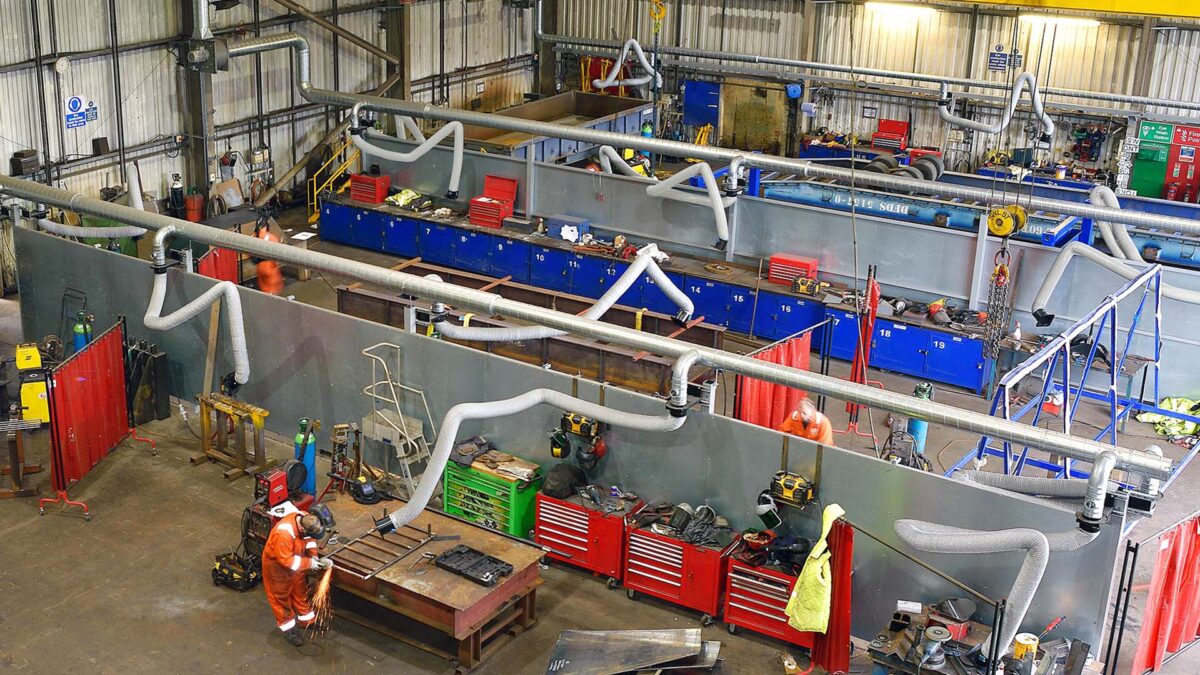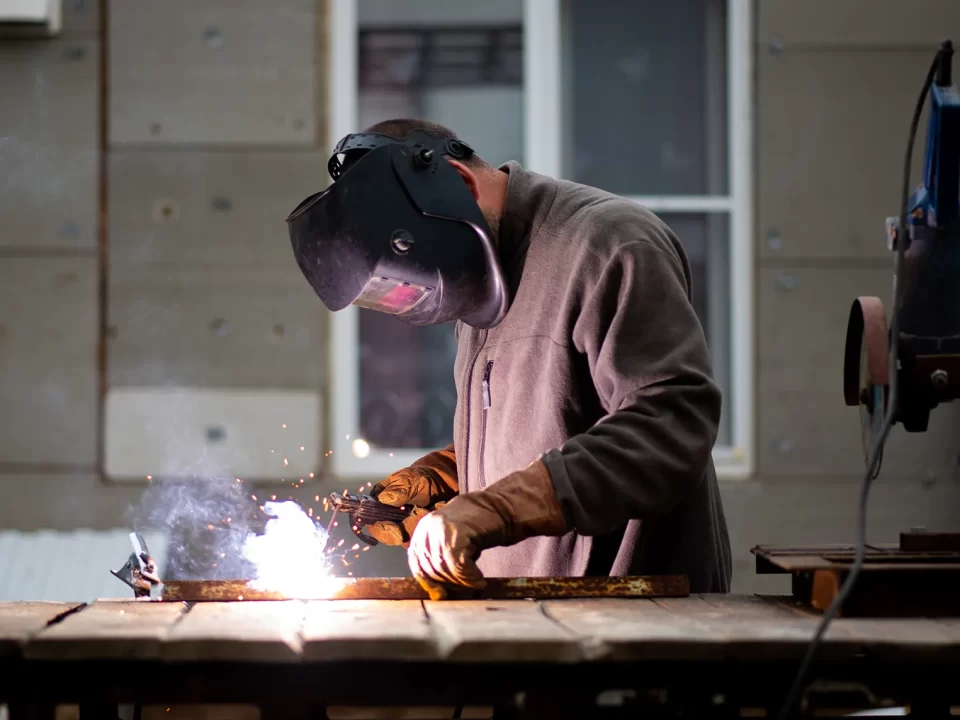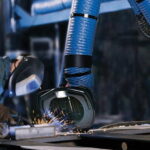
Achieving Cost Savings and Energy Efficiency with Welding Fume Extractors
March 3, 2023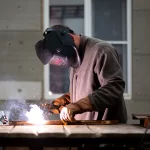
Welding Machine Calibration: A Critical Step in Quality Control
March 24, 2023Welding fume extractors are crucial equipment in workplaces where welding is performed. They protect workers’ health by removing fumes and particles produced during the welding process that can pose significant health hazards.
In this article, we will discuss various applications of welding fume extractors in the workplace.
1. Protection of Workers’ Health
Welding fume extractors are necessary to protect workers’ health as they capture and remove fumes and particles produced during the welding process.
According to the Occupational Safety and Health Administration (OSHA), welding fumes and particles can cause respiratory illnesses, lung cancer, and chronic obstructive pulmonary disease (COPD).
Workers who are exposed to high levels of welding fumes and particles have an increased risk of lung cancer. Investing in welding fume extractors is necessary to create a safe and healthy work environment for employees.
The fumes and particles produced during welding contain several hazardous chemicals, including metals like aluminium, cadmium, chromium, copper, iron, lead, manganese, and zinc. Exposure to these chemicals can cause short-term and long-term health problems.
Short-term health problems include headaches, dizziness, nausea, and eye, nose, and throat irritation. Long-term health problems include respiratory illnesses, asthma, emphysema, lung cancer, and other chronic health conditions.
2. Compliance with Occupational Safety and Health Administration (OSHA) Regulations
OSHA has set strict regulations for welding fumes and particle exposure in the workplace. Failure to comply with these regulations can result in severe fines and other penalties.
Investing in welding fume extractors not only helps to comply with the regulations but also improves air quality in the workplace.
OSHA regulations require employers to protect workers from exposure to hazardous chemicals and materials, including welding fumes and particles.
Employers must assess the exposure levels of workers, implement control measures to reduce exposure levels, provide personal protective equipment (PPE), and train workers on the hazards and control measures.
Welding fume extractors are an effective control measure that can help to reduce exposure levels and protect workers’ health.
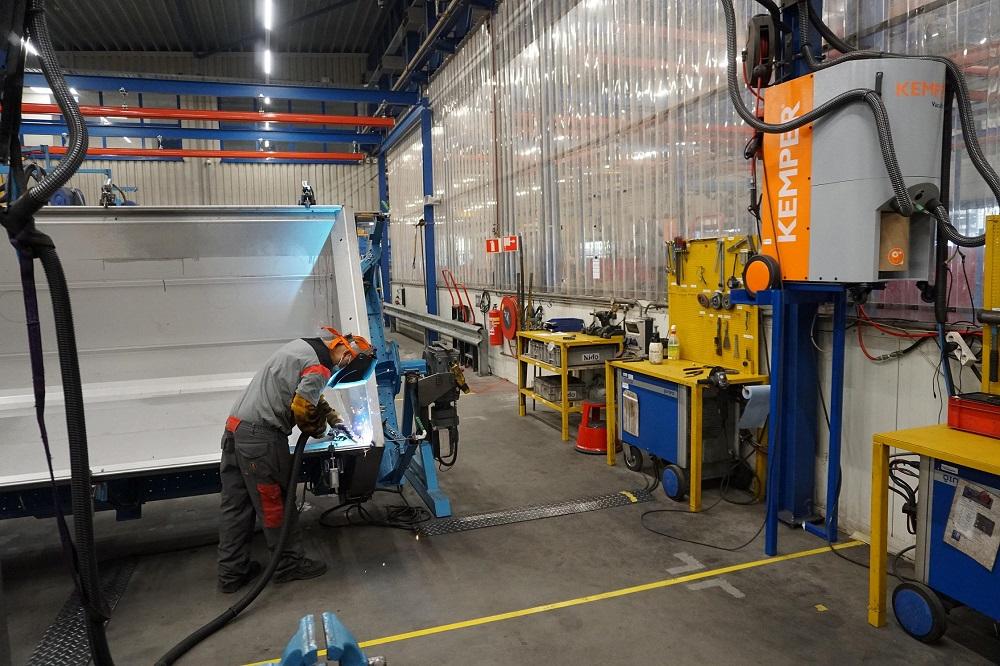
3. Cost Reduction
Investing in welding fume extractors can lead to significant cost savings over time. Welding fume extractors capture fumes and particles before they settle on surfaces, reducing the need for expensive cleaning and maintenance.
Fumes and particles settle on surfaces and equipment, increasing cleaning and maintenance costs. Regular cleaning and maintenance are necessary to prevent the build-up of fumes and particles that can pose a health hazard to workers.
Investing in welding fume extractors can also lead to increased productivity and reduced downtime. Workers who are exposed to hazardous chemicals and materials are more likely to get sick and take time off work.
The implementation of control measures like welding fume extractors reduces exposure levels and creates a safe and healthy work environment, reducing worker absenteeism and downtime.
4. Improved Visibility
Welding fume extractors improve visibility in the workplace, allowing for safer and more accurate welding.
The removal of fumes and particles that can obscure the welder’s vision leads to better quality work. Welders need to have clear visibility of the welding area to ensure accurate and consistent welding.
The removal of fumes and particles also reduces eye strain, which can lead to worker fatigue and reduced productivity.
5. Improved Air Quality
Improved air quality is another critical application of welding fume extractors in the workplace. The removal of fumes and particles that can cause respiratory problems creates a safer and healthier work environment for employees.
Welding fumes and particles can cause short-term and long-term health problems, as discussed earlier. Investing in welding fume extractors is necessary to reduce exposure levels and protect workers’ health.
Improved air quality also contributes to a better work environment, reducing worker absenteeism and increasing productivity.

6. Reduced Fire Hazards
Welding fume extractors reduce fire hazards in the workplace by capturing and removing the sparks and hot particles that are produced during the welding process. This leads to a safer work environment and reduces the risk of property damage.
Sparks and hot particles can ignite flammable materials in the workplace, resulting in a fire hazard. The implementation of control measures like welding fume extractors reduces the risk of fires, protecting workers and property.
Conclusion
In conclusion, investing in welding fume extractors is a wise decision for employers who want to create a safe and healthy work environment for their employees.
Welding fume extractors protect workers’ health, improve productivity, reduce cleaning costs, improve visibility, improve air quality, and reduce fire hazards.
It is essential to select welding fume extractors suitable for the specific application as different types of welding produce different amounts and types of fumes and particles.
Investing in welding fume extractors also helps to comply with OSHA regulations and protect workers from hazardous chemicals and materials.

